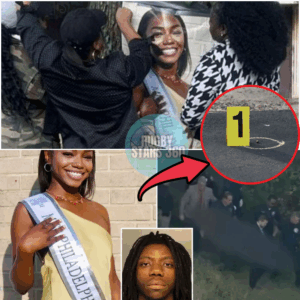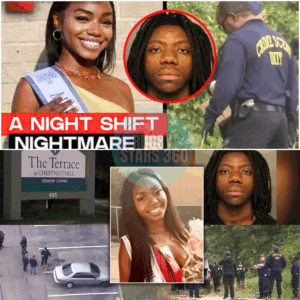Home Alone 2 Director Chris Columbus Wishes to Remove Donald Trump’s Cameo: A Curse That Lingers
:max_bytes(150000):strip_icc()/trump-home-alone-2-2000-48d1edf76c2e4700a7189dff43485848.jpg)
In a recent interview with the San Francisco Chronicle on April 15, 2025, Chris Columbus, the acclaimed director of Home Alone 2: Lost in New York, expressed deep regret over the inclusion of a brief cameo by Donald Trump in the 1992 holiday classic. Columbus described the seven-second scene as a “curse” and an “albatross” that has haunted him for over three decades. “I just wish it was gone,” he lamented, adding with a mix of humor and apprehension, “I can’t cut it. If I cut it, I’ll probably be sent out of the country. I’ll be considered sort of not fit to live in the United States, so I’ll have to go back to Italy or something.” This statement, made in jest but reflective of deeper concerns, underscores the complex legacy of a cameo that was once a minor detail but has since become a lightning rod for controversy.
The Context of the Cameo
Home Alone 2: Lost in New York, the sequel to the wildly successful Home Alone (1990), follows Kevin McCallister (Macaulay Culkin) as he accidentally boards a flight to New York City instead of joining his family in Miami for the Christmas holidays. Upon arriving, Kevin checks into the luxurious Plaza Hotel, where he encounters Donald Trump, then a prominent real estate mogul and the hotel’s owner. In the scene, Kevin asks Trump for directions to the lobby, to which Trump responds, “Down the hall and to the left.” The cameo, lasting less than ten seconds, was a small but memorable moment in a film that grossed $359 million worldwide and became a holiday staple.
At the time of filming, Trump’s inclusion was not unusual. In the early 1990s, he was a celebrity known for his business ventures and media presence, often appearing in films and TV shows such as Zoolander, Sex and the City, and The Associate. However, the decision to include him in Home Alone 2 was not entirely creative. Columbus revealed in a 2020 interview with Business Insider that Trump insisted on the cameo as a condition for allowing the production to film in the Plaza Hotel’s iconic lobby. “We paid the fee, but he also said, ‘The only way you can use the Plaza is if I’m in the movie,’” Columbus explained. This quid pro quo arrangement was not unique to Home Alone 2. Actors Matt Damon and Chris O’Donnell have recounted similar experiences with Trump demanding cameos for filming permissions in other projects, such as Scent of a Woman, though those scenes were ultimately cut.
Audience Reaction and the Decision to Keep the Scene
Initially, Columbus considered removing Trump’s cameo, unsure if it would resonate with audiences. However, during test screenings in Chicago, an unexpected reaction changed his mind. “The oddest thing happened: People cheered when Trump showed up on-screen,” Columbus recalled. “So I said to my editor, ‘Leave him in the movie. It’s a moment for the audience.’” This enthusiastic response, likely driven by Trump’s celebrity status at the time, cemented the scene’s place in the final cut. Columbus later admitted he did not anticipate the cameo becoming a point of contention decades later. “I never thought that was going to be considered hilarious,” he told the San Francisco Chronicle.
The decision to retain the scene was pragmatic, driven by audience feedback and the logistical challenges of reshooting or editing around it. The Plaza Hotel’s lobby, which could not be replicated on a soundstage, was integral to the film’s setting, making Trump’s condition a necessary compromise. Yet, as Trump’s public persona evolved from businessman to controversial political figure, the cameo’s significance shifted, transforming it into what Columbus now calls a “curse.”
The Cameo’s Controversial Legacy
Over the years, Trump’s cameo in Home Alone 2 has sparked debate, particularly as his political career intensified. In 2019, the Canadian Broadcasting Corporation (CBC) aired a version of the film with Trump’s scene removed, prompting backlash from his supporters, who viewed it as politically motivated censorship. Macaulay Culkin, the film’s star, added fuel to the conversation in 2021 when he endorsed a fan’s suggestion to digitally replace Trump’s cameo with a 40-year-old version of himself, tweeting, “Sold.” These incidents highlight the polarized reactions to the scene, with some seeing it as a harmless relic of the 1990s and others as a symbol of Trump’s outsized influence.
Columbus has been vocal about his discomfort with the cameo’s lasting impact. In 2023, Trump responded to Columbus’s claims of being “bullied” into including the scene, asserting on Truth Social that the filmmakers were “begging” for his participation and that the cameo “helped make the movie a success.” Columbus firmly rejected this narrative, stating, “There’s no world I would ever beg a non-actor to be in a movie. But we were desperate to get the Plaza Hotel.” This back-and-forth underscores the tension between artistic control and external pressures, a recurring theme in Columbus’s reflections on the film.
Columbus’s Fear of Repercussions
Columbus’s 2025 comments about fearing deportation if he were to cut the scene, though hyperbolic, reflect a heightened sensitivity to the political climate. Born and raised in the United States but of Italian ancestry, Columbus referenced a recent incident involving the Trump administration’s erroneous deportation of a Maryland resident to El Salvador, which was later deemed unconstitutional. This context lends a layer of unease to his remarks, suggesting that the director perceives a risk—real or exaggerated—in challenging Trump’s presence in the film. “I can’t cut it,” he reiterated. “If I cut it, I’ll probably be sent out of the country.”
This fear, whether genuine or tongue-in-cheek, speaks to the broader cultural and political weight the cameo has acquired. For Columbus, a filmmaker known for blockbusters like Mrs. Doubtfire and the first two Harry Potter films, the scene has become a professional burden, overshadowing his contributions to a beloved franchise. Posts on X from April 15, 2025, amplify this sentiment, with users noting Columbus’s “liberal meltdown” over a five-second clip and others highlighting the ongoing debate about the scene’s relevance.
The Broader Implications
The controversy surrounding Trump’s cameo raises questions about the intersection of art, commerce, and politics. Filmmakers often navigate complex negotiations to secure locations, talent, or funding, but decisions made in the moment can have unforeseen consequences. Columbus’s experience illustrates how a seemingly minor creative choice can become a lightning rod when the individuals involved gain historical significance. The cameo, once a crowd-pleasing nod to a celebrity, is now a flashpoint in discussions about media representation and accountability.
Moreover, the debate touches on the ethics of retroactively editing films. Removing Trump’s cameo, as some have advocated, could be seen as revising history to align with contemporary values, a practice that risks alienating audiences who value the film’s original context. Conversely, keeping the scene intact may perpetuate discomfort for those who associate Trump with divisive policies or actions. Columbus’s reluctance to act, citing potential repercussions, highlights the delicate balance filmmakers face when revisiting their work in a changed world.
Chris Columbus’s desire to erase Donald Trump’s cameo from Home Alone 2: Lost in New York reflects a broader reckoning with the unintended consequences of creative decisions. What began as a practical compromise to secure a filming location has evolved into a “curse” that Columbus cannot escape. His fear of “deportation,” while likely an exaggeration, underscores the emotional and professional toll of the cameo’s legacy. As Home Alone 2 continues to delight audiences each holiday season, the brief encounter between Kevin McCallister and Donald Trump remains a poignant reminder of how art can intersect with politics in unexpected ways. Whether the scene will ever be removed remains uncertain, but for now, it endures as a seven-second albatross around Columbus’s neck, a small but persistent footnote in a cinematic classic.






